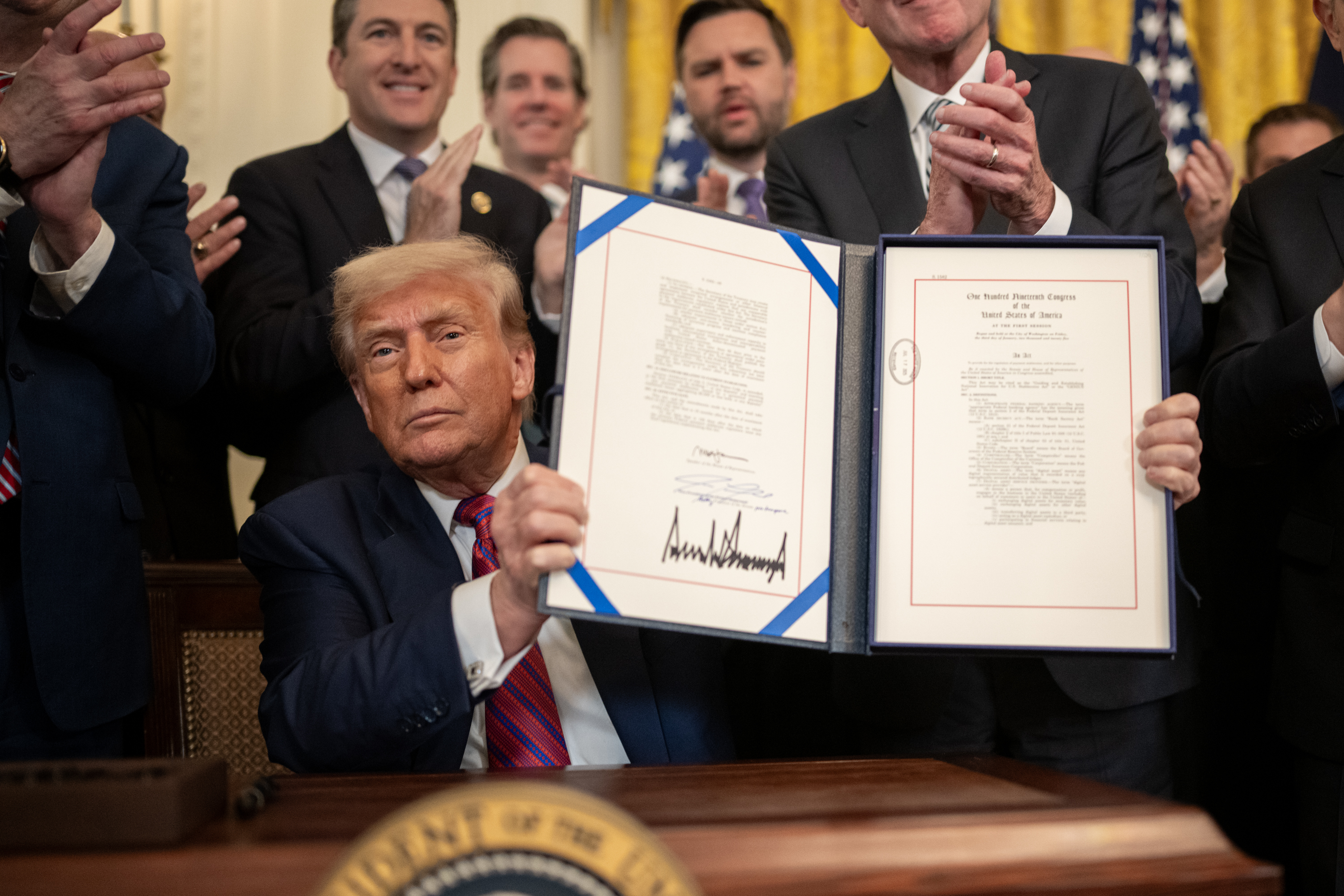POTUS Trump Signs GENIUS Act, Launching U.S. into Global Leadership on Stablecoins and Digital Finance
In what is being viewed as a major policy moment at the White House by insiders and analysts, POTUS Donald J. Trump signed the GENIUS Act into law on Friday. This, according to the White House, ushers in a new era of digital currency regulation and securing the United States' foothold in the global cryptocurrency economy.
Joined by lawmakers, financial regulators, and leaders from the crypto sector, the president formalized the first comprehensive federal framework for stablecoins—digitally-issued currencies tied to the U.S. dollar.
 |
| Image Source: White House |
The legislation, which saw rare bipartisan support, is designed to provide legal clarity and financial oversight for dollar-backed stablecoins, addressing a long-standing gap in crypto regulation.
The White House has described the law as a critical move to protect consumers, reinforce dollar dominance, and strengthen America’s role in digital asset innovation.
At the core of the law is a requirement that stablecoins maintain full reserves—100% backed by liquid assets such as U.S. dollars or short-term Treasuries. Issuers must comply with strict public disclosure rules on reserve composition and face restrictions on marketing practices.
Importantly, they are barred from making misleading claims about federal backing or legal tender status.
The GENIUS Act also introduces consumer-first protections in the event of issuer insolvency, giving stablecoin holders priority over other creditors. The legislation aligns federal and state frameworks, removing jurisdictional ambiguities that previously stalled industry growth.
The Act goes further by integrating stablecoin oversight into existing anti-money laundering frameworks. Issuers will be subject to the Bank Secrecy Act, requiring robust compliance programs for sanctions enforcement, risk assessments, and customer identity verification.
They must also demonstrate the technical capability to freeze or remove tokens from circulation when ordered by law.
According to administration officials, the Act is expected to strengthen national security while unlocking new efficiencies in financial markets.
The law ensures that digital dollar-based assets can be safely integrated into payment systems without compromising regulatory standards.
Industry response has been overwhelmingly positive. Leaders from major crypto firms including Coinbase, Ripple, Kraken, Chainlink, and Paxos praised the legislation as a turning point that would spur U.S.-based innovation while helping to anchor the dollar as the dominant global reserve currency in the digital age.
This policy shift arrives as blockchain technology gains increasing relevance in mainstream finance. By mandating that stablecoins be backed with Treasury instruments and cash, the GENIUS Act is expected to generate new demand for U.S. debt, indirectly supporting fiscal stability while accelerating blockchain adoption.
Administration officials believe the legislation also sends a clear message to foreign competitors: the U.S. is no longer on the sidelines in the race to define the future of money. As other global powers move forward with their own central bank digital currencies, the GENIUS Act puts America in position to lead—not follow—in shaping financial infrastructure for the 21st century.
With the GENIUS Act now law, federal agencies including the Treasury, SEC, and Federal Reserve are expected to issue detailed implementation guidance in the months ahead. Industry observers say the U.S. is likely to see a wave of stablecoin innovation and institutional adoption in the near term, as regulatory certainty attracts both capital and talent back onshore.
The signing represents a major legislative victory for the Trump administration and marks one of the most significant digital asset policies ever enacted in the United States.
